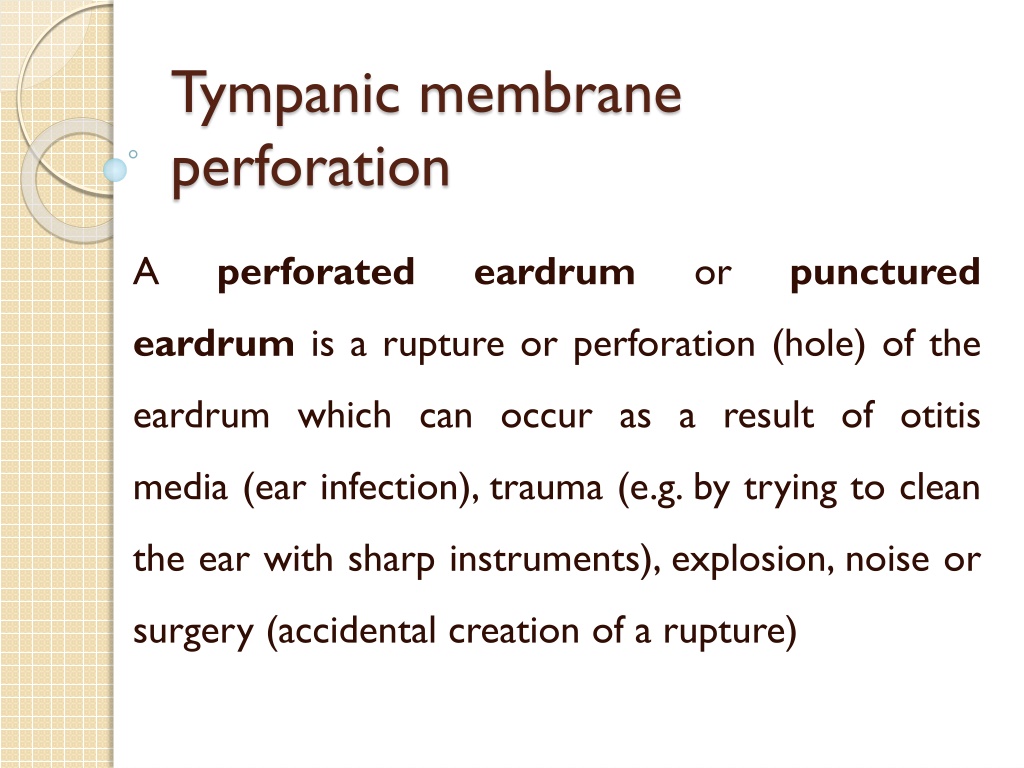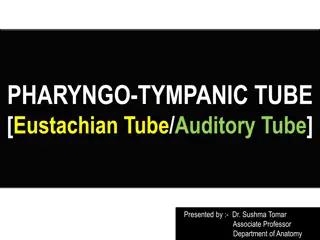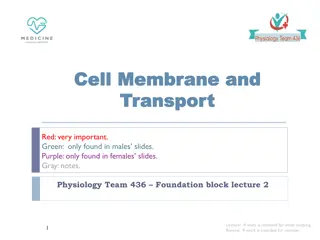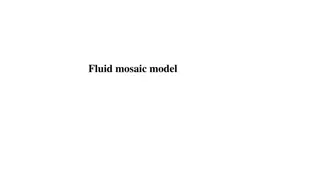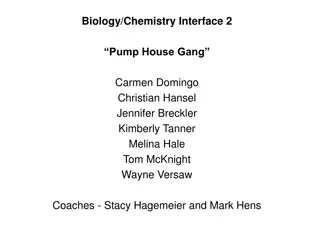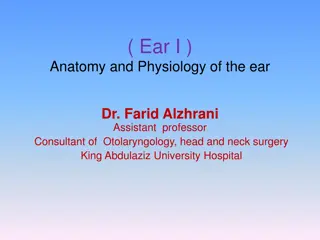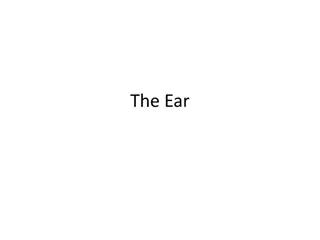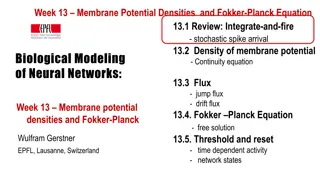Understanding Tympanic Membrane Perforation: Causes, Symptoms, and Management
A tympanic membrane perforation, or perforated eardrum, can result from various factors such as infections, trauma, loud noises, or surgery. It presents with symptoms like pain, hearing changes, and ear fullness. Different types of perforations exist, and diagnostic procedures include history collection and otoscopic examination. Management ranges from observation to surgical interventions like tympanoplasty. Antibiotics may be prescribed to prevent infections, and surgical procedures like myringoplasty and ossiculoplasty can be performed for severe cases.
Download Presentation

Please find below an Image/Link to download the presentation.
The content on the website is provided AS IS for your information and personal use only. It may not be sold, licensed, or shared on other websites without obtaining consent from the author. Download presentation by click this link. If you encounter any issues during the download, it is possible that the publisher has removed the file from their server.
E N D
Presentation Transcript
Tympanic membrane perforation A perforated eardrum or punctured eardrum is a rupture or perforation (hole) of the eardrum which can occur as a result of otitis media (ear infection), trauma (e.g. by trying to clean the ear with sharp instruments), explosion, noise or surgery (accidental creation of a rupture)
Etiological factors Infections of the middle ear damage the eardrum Direct injury to the ear punch to the ear A sudden loud noise explosion Barotrauma altitude change, pressure varies. During cleaning the ear Rupture during surgery
Clinical features Pain Discomfort Hearing change or loss Fullness of ear Ringing sensation tinnitus Blood tinged discharge from ear Pus discharge when the cause is otitis media vertigo
Types of eardrum perforations Perforation at margin of the eardrum This is a perforation that occurs at the margin of the eardrum - where the eardrum and ear canal come together. Central eardrum perforation A perforation can occur in any location on the eardrum. The size of the perforation varies from a small opening to a total (entire) eardrum perforation. Attic perforation of the eardrum This is a perforation in the superior part of the eardrum. This is referred as an attic perforation.
Diagnostic procedures History collection Physical examination Otoscopic examination Tympanometry to note the pressure Audiometry hearing test
Management medical No treatment is needed in mild cases. Tympanic membrane with small torn and holes will heal by itself in most cases. A torn (perforated) eardrum will usually heal by itself within 6-8weeks. Advise the patient to keep the ear dry and clean. Avoid water getting into the ear apply cotton while showering or washing hair. Avoid swimming until it healed.
Antibiotics can be prescribe if any risk for infection Analgesics for otalgia If perforated eardrum is due to foreign body in the ear, do not try to remove it self.
Surgical management Indication unhelaed torns and large torns Tympanoplasty it is the surgical correction of the perforated eardrum Myringoplasty closure of perforation is called as myringoplasty Ossiculoplasty ossicular reconstruction is called ossiculoplasty
Tympanoplasty Microsurgical procedure uses patients own tissues (autologous grafts) to reconstruct the tympanic membrane Grafts may be taken from different areas includes temporalis facia. Alloderm grafts (from synthetic materials) may be used if patients have multiple previous surgeries Homografts and xenografts have less successful rate
Approches Post aural End aural Trans canal
Classification of tympanoplasty Type I involves repair of the tympanic membrane alone (myringoplasty) Type II involves repair of the TM and middle ear in spite of slight defects in the ossicles Type III involves removal of ossicles when a large defect of malleus and incus. In this tympanic membrane is repaired and directly connected into the stapes Type IV repair when the stapes foot plate is movable but ligament is missing Type V repair of fixed stapes footplate.
Complication of surgery Bleeding or infection pain Facial nerve palsy rarely permanent Tinnitus Loss of taste last few weeks Dizziness for a short time Partial or total loss of hearing may rarely occur
Activity - Avoid strenuous activity. Walking is a normal activity that can be started straight away. Keep the ear dry. Cover ear while taking a bath or shower. Use cotton ball coated with Vaseline to protect the ear. Do not lift anything heavier than 20 lb during the first postoperative week. Sneeze with your mouth open. Blow your nose gently or avoid blowing nose. Avoid air travel during the first two weeks.
Prevention Some causes of ruptured eardrums cannot be prevented or avoided. A little caution can lower the risk. Treat ear infections early. Avoid flying or scuba diving if have sinus infection or upper respiratory tract infection. During fly or scuba dive, pinch nose and swallow air frequently to help equalize the pressure. Never put anything in your ear, even to clean it. Wear proper ear protection such as ear plugs or protection designed for sports activities.
